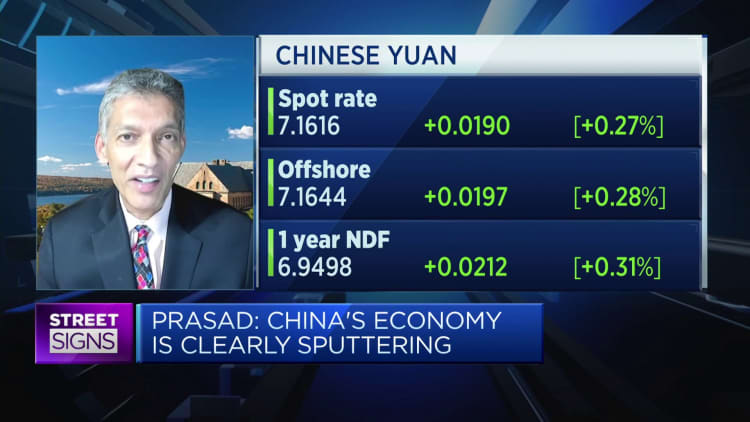In the workshop of a machinery and equipment manufacturing enterprise in Qingzhou Economic Development Zone, East China’s Shandong province, a worker is seen engaged in welding. (July 17, 2023)
Image Source: Future Publishing | Getty Images
In July, factories in Asia experienced a slowdown in demand as both domestic and global orders declined, signaling a continued weak momentum in the global economy.
Out of the nine private surveys released on Tuesday, six revealed that manufacturing activity in major Asian producers contracted again last month. Surprisingly, China’s reading slipped into contraction for the first time in three months.
Aside from China, Japan, South Korea, Malaysia, Taiwan, and Vietnam also reported contraction in their manufacturing activity. Only India, Indonesia, and the Philippines showed signs of expansion.
Shivaan Tandon, an economist with Capital Economics, stated in a note on Tuesday that “Manufacturing PMIs remained in contractionary territory across most of Emerging Asia last month and the underlying data point to further weakness ahead.” Tandon added, “Falling new orders, bleak employment prospects, and high inventory levels point to subdued factory activity in the coming months. The data reaffirm our view that external demand will constitute a headwind to growth in the second half of 2023.”
Weak demand has also led to reduced production costs in some emerging Asian economies, which may alleviate inflationary pressures and potentially result in looser monetary policies.

According to S&P, Taiwan’s manufacturing purchasing managers’ index (PMI) reading for July was particularly dire, falling to 44.1 from 44.8 in June. This decline marks the sharpest contraction since November 2022.
PMI manufacturing surveys serve as leading indicators of economic activity, with a reading above 50 indicating expansion and a reading below signaling contraction.
Weak New Orders
In Taiwan, a major global producer of semiconductors, new export business contracted at the steepest rate in six months. Firms cited reduced demand in various markets, including Europe, Japan, mainland China, and the United States.
“Declines in output, new orders, and export sales all accelerated, with firms attributing these declines to weaker global economic conditions and high inventory levels at clients,” said Annabel Fiddes, associate director for economics at S&P Global Market Intelligence.
A similar drop in new orders was observed in other East Asian economies, such as Vietnam, which experienced the weakest or joint-weakest rates of contraction since March.

In China, the Caixin/S&P PMI reading fell to 49.2 in July, signaling contraction for the first time in three months. This was lower than the median forecast and driven by a decline in new businesses received by China’s producers. Additionally, new export business also contracted at the fastest pace since September last year, according to the survey.
Falling Price Pressures
The weak demand for Asia’s factory output has resulted in reduced production costs. In Japan, manufacturers reported a decline in input price inflation at the start of the third quarter, with the slowest increase in operating expenses in close to two-and-a-half years. South Korea and Taiwan also experienced declines in input prices, with South Korea’s being the sharpest since July 2017 and Taiwan’s being the second-sharpest since May 2020.
Taiwanese manufacturers mentioned competitive pricing strategies, price negotiations with clients, and improved material availability as factors contributing to the reduction in costs. As a result, they were able to pass on cost savings to customers by cutting sale prices at the quickest pace in over three years, according to S&P.

“Sub-indices for both input and output prices stood near multi-year lows and point to further falls in inflation in the near-term,” noted Shivaan Tandon from Capital Economics, referring to emerging East Asian economies. Official government data showed that inflation in South Korea and Taiwan has slowed compared to their peaks about a year ago.
Tandon added, “The latest data support our view that price pressures are likely to soften steadily in the near-term and, with growth set to struggle and remain well below-trend, central banks in the region are likely to start cutting interest rates soon.”
Denial of responsibility! VigourTimes is an automatic aggregator of Global media. In each content, the hyperlink to the primary source is specified. All trademarks belong to their rightful owners, and all materials to their authors. For any complaint, please reach us at – [email protected]. We will take necessary action within 24 hours.


